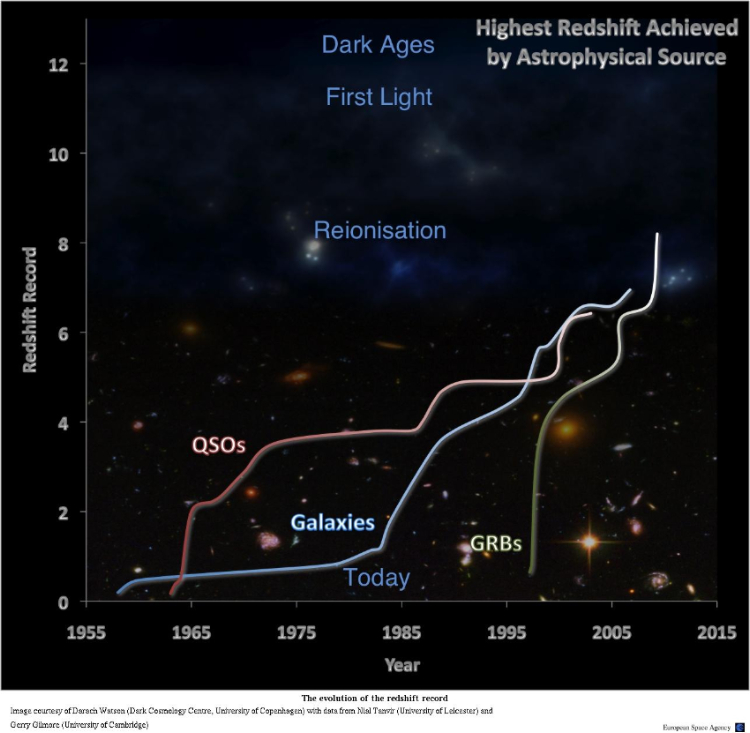
 Credit: Darach Watson (Dark Cosmology Centre, University of Copenhagen) with data from Nial Tanvir (University of Leicester) and Gerry Gilmore (University of Cambridge) and ESA
Credit: Darach Watson (Dark Cosmology Centre, University of Copenhagen) with data from Nial Tanvir (University of Leicester) and Gerry Gilmore (University of Cambridge) and ESA
Do Look Back
As Edwin Hubble assured us, the farther away things are in the Universe, the faster they recede from us. Farther objects have higher redshifts. Hubble deduced all this from measurements of redshifts only out to a relatively piddly 2 million parsecs. These days astronomers rather routinely measure redshifts of objects hundreds of millions, even billions of parsecs away. But out of the immense number of objects in the sky, how can we find the most distant? One of the most efficient means is to use gamma-ray bursts. Not so long ago GRBs were a mystery, but now astronomers know they are associated with the explosive deaths of very massive stars. These powerful explosions can be viewed literally to the edge of the Universe. Sometimes these bursts are associated with a faint galaxy, and often the galaxy has a very high redshift. In fact the most distant known object in the Universe is a galaxy associated with a GRB. The image above shows the "history" of how we've identified distant objects using GRB observations compared to observations of normal galaxies and quasi-stellar active galaxies. The rapid rise in the record redshifts identified using GRBs shows that we're rapidly catching up to our distant past, and gamma-ray bursts are lighting the way.
Published: November 30, 2009
<
HEA Dictionary ● Archive
● Search HEAPOW
● Other Languages
● HEAPOW on Facebook
● Download all Images
● Education ● HEAD
>

Each week the HEASARC
brings you new, exciting and beautiful images from X-ray and Gamma ray
astronomy. Check back each week and be sure to check out the HEAPOW archive!
Page Author: Dr. Michael F. Corcoran
Last modified Monday, 26-Feb-2024 17:36:33 EST


